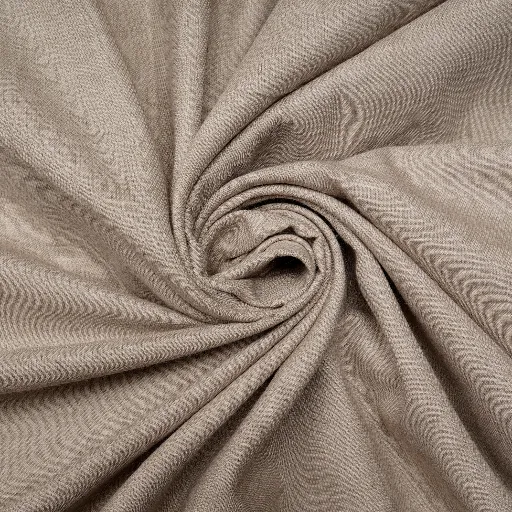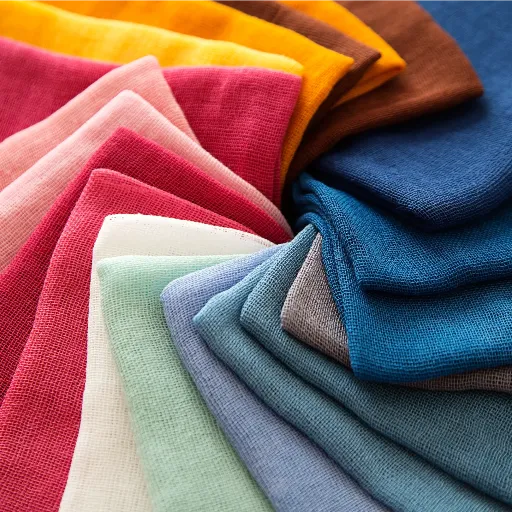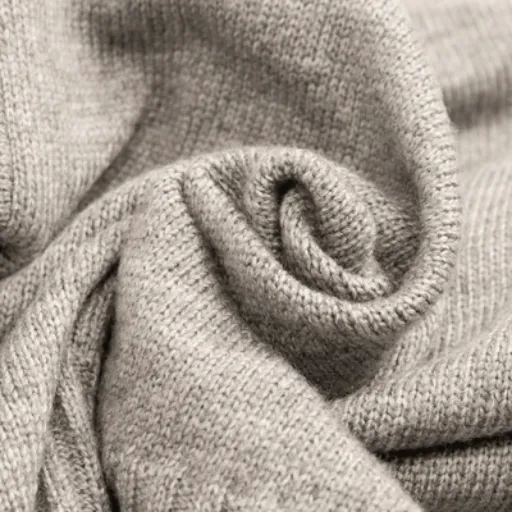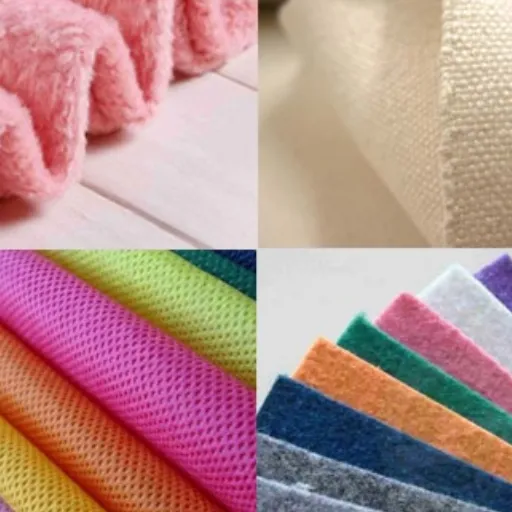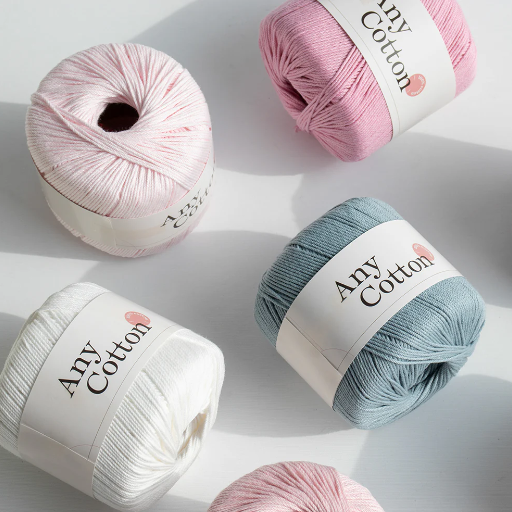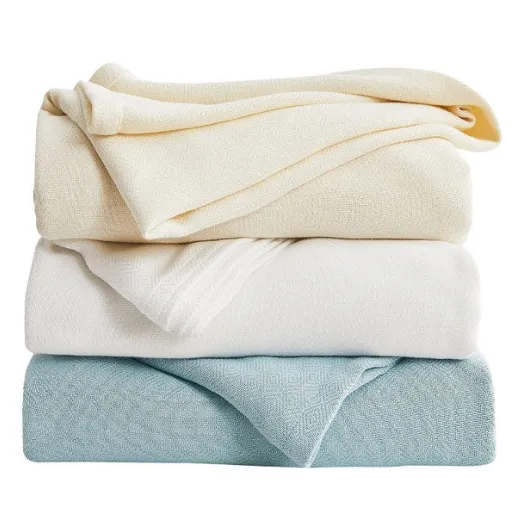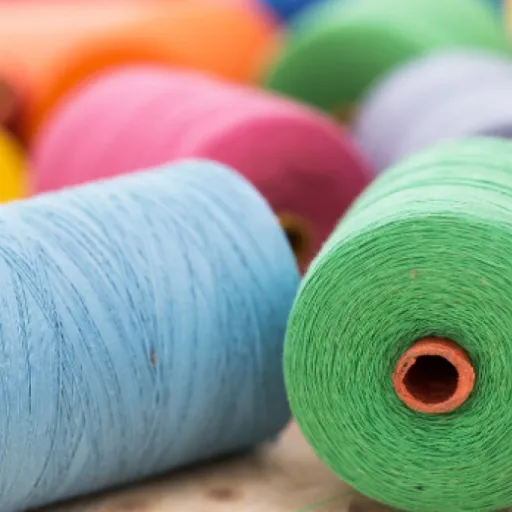Balancing between the qualities of natural and synthetic fibers while picking the best yarn for your knitting or crocheting task may be daunting. Blend yarns made out of cotton and acrylic yarns offer something that appeals to all crafters, from novices to experts. In this article, I will focus on the most notable benefits of this blend’s excellent durability, low cost, and versatility which have made it a staple among crafters. This blend is also excellent for those looking for yarn that is both breathable for summer garments as well as sturdy for everyday accessories. Keep reading to find out how cotton and acrylic blend yarns boost not just the crafting experience but also the quality of the finished pieces.
What’s Cotton Acrylic Blend Yarn?
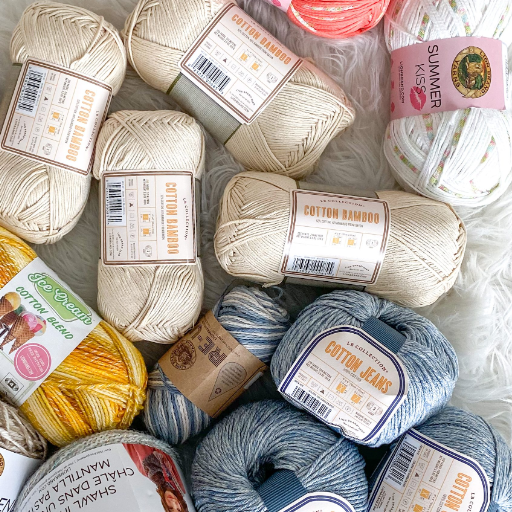
Of particular note is that cotton acrylic blend yarn is a mix of natural fibers and synthetic strands of acrylic yarn. The blend takes advantage of breathable and soft characteristics of cotton, coupled with lightweight, lasting, and low maintenance characteristics of acrylic. The blend will also yield a versatile cotton yarn which is easy to work with, pill resistant, and provides excellent stitch definition. For these qualities, it is favored for garments and accessories as well as home décor for its balance of comfort, strength, and price.
Understanding the Composition of Cotton-Acrylic Blend
Breathability, moisture absorption, and soft texture are a few characteristics why skin wearing cotton is comfortable. Cotton, a natural cellulose fiber, also withstand high tensile strength which increases durability. It does provide comfort but pure cotton’s prone wrinkling and shrinkage is problematic. These issues can be solved when blended with synthesized fibers like acrylic.
Acrylic materials are polymers that are easy to clean and relatively lightweight. Their durability makes acrylics fibers useful in the long-term maintenance of equipment. Furthermore, they add to the insulative properties of the blend, which contributes to warmth. The shape-retaining characteristics and resistance to pilling ensures products keep the appealing looks even after heavy use and frequent washes.
The cotton-acrylic blend illustrates a perfect example of the advantages from both natural and synthetic fibers. It is a perfect combination of breathability and comfort from cotton, while acrylic adds to durability and stretch. This cooperation makes the material soft yet very strong. Owing to these attributes, the blend is used in many areas from clothing to home textiles. It can be used in summer garments as well as winter fabrics, making it very adaptable.
Common Uses for Cotton Acrylic Blend Yarn
- Apparel Manufacturing
- Lightweight garments: Carry-on and summer dresses with breathability and comfort. T-shirts, blouses and various dresses.
- Winter wear: Warm and resilient during the cold weather when used in sweaters, cardigans and hats.
- Activewear: Resilient during movement. Works well with sport and exercise.
- Home Textiles
- Blankets and Throws: Soft and durable which is required when creating warm cozy blankets.
- Bedding: Used in blankets, float pillows, and frames
- Decorative items: Support the sleeper’s head. Used widely in covers, accent pillows, and woven drapery for their beauty and strength.
- Knitting and Crocheting
- It is DIY lovers that enjoy hobbies such as mitten, sock, shawl, and baby clothing making which are projects that are easy to do. The reason for this is because the materials that are used are soft and very easy to handle.
- Industrial Applications
- Workwear: Preventive maintenance or PM work uniforms need to have a high level of durability and protective qualities against impact and abrasion. This feature is important for uniforms/work garments that are long-lasting.
- Upholstery and Carpeting: The use of colorfast and tough cotton-acrylic blend fabrics for tuffets, carpets and upholstery.
- Sustainable Fashion
- This type of fashion utilizes specially selected blended yarns. These blended yarns can also help prolong the lifespan of garments that are used which in turn helps reduces waste in the fashion industry while ensuring comfort and style.
What are the Advantages of Using Cotton Blend Yarn?
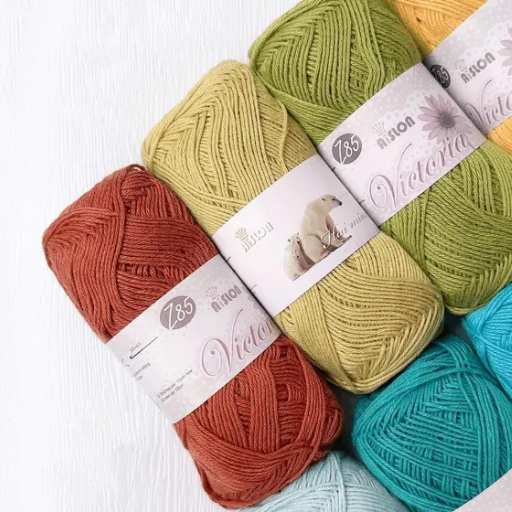
- Enhanced Durability: Products made from a blend of cotton and synthetic fibers have increased durability against wear, shrinkage, and tearing when compared to using cotton alone.
- Comfort and Breathability: As with all products made of cotton, the natural variety softness and breathability stays comfortable for everyday wear.
- Moisture Management: The cotton blend yarns are capable of wicking moisture, hence improving the performance of activewear and other sports fabrics.
- Improved Versatility: The combination of fibers provides different textures, finishes and appearances which can accommodate many styles and functions.
- Cost Efficiency: Blended Cottons improve value for money for dependable and quality materials by lowering production costs.
- Sustainability: In the fashion and textile industries, bonded cotton blends augment sustainability by conserving resources since they lessen the need to buy new pieces.
Softness and Comfort of Cotton Blend Yarn
Textile engineering has made it possible to produce cotton blends with finer and softer finishes that are more desirable. With the addition of polyester, modal, or spandex, cotton blends offer durability and stretch, keeping comfort a top priority while also being soft and breathable. This expanding range of applications from clothing to home textiles boosts comfort and reduces skin irritation, breathing ease, and moisture wicking. Cotton blend yarns are perfect for accessories and clothing used in low and high-casual performance settings. Studies show cotton blends preserve their comfort of stretching and moisture wicking, along with their aid in breathability and overall. The holistic properties of cotton-blended fabrics make them super soft yet provide unparalleled comfort.
Breathability of Cotton Yarn Compared to Acrylic
Natural cotton yarn is easier to breathe with than acrylic yarn because it contains natural fibers. The air circulation through cotton is unrestricted and perspiration would be absorbed quickly. Therefore, cotton is preferred for clothing in hot or tropical regions. On the contrary, acrylic is a synthetic fiber with low air permeability. Acrylic fabrics are able to replicate the softness of cotton, but are not effective in ventilation because they tend to retain both heat and moisture. Research on fabric performance shows that the ability to control temperature is one of several reasons cotton is popular in active wear and summer clothes, whereas acrylic is usually colder in insulated garments because of its heat-trapping capability. These different behaviors clearly show the advantages of natural fibers, especially cotton, where breathing and moisture management are crucial.
Machine Washable Features of Cotton Acrylic Blend
Due to the synergistic characteristics of the fibers, cotton-acrylic blends are highly durable and easy to care for when it comes to machine washing. The cotton part helps with breathability while the material is soft, promoting gentleness after numerous washes. Acrylic fibers add elasticity and make it softer. Leading industry data highlights that the garments from this blend not only preserve their appearance over time but also reduce pilling when compared to pure cotton. In addition, the blend has effective moisture-wicking properties which enhances drying times. For these fabrics to maintain their best condition, it is ideal to use cold to warm water, gentle detergent, and to air dry which helps preserve the material structure. Thus, for consumers looking for low-maintenance fabrics with prolonged wear, cotton-acrylic blends are a great option.
How to Choose the Right Cotton and Acrylic Yarn for Your Project?
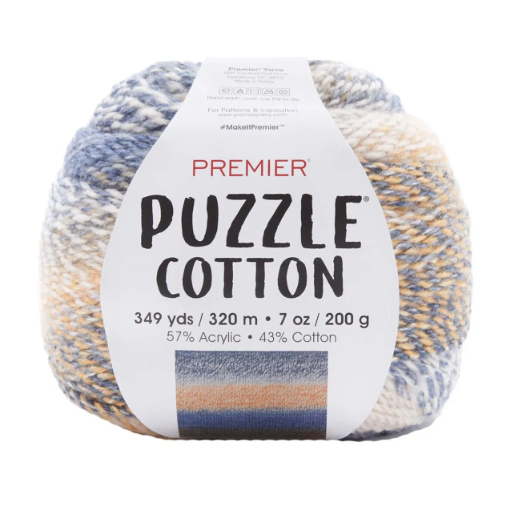
- Project Type: This identifies the kinds of project you want to handle. Cotton-heavy blends suit light and breathable items, e.g., summer garments or dish cloths. For items needing warmth, such as blankets or winter accessories, higher acrylic blends are more suitable.
- Texture and Feel: Focus on how the yarn feels to the touch. Smooth and soft describe how cotton feels, while acrylic adds to stretch and resilience. Pick a texture that meets the desired outcome of your project.
- Care Requirements: Care instructions labeled on the yarn should be followed precisely. While the acrylic is more machine wash friendly and less resistant to shrinking, cotton is more delicate and requires specific attention to preserve its quality.
- Budget: Think about your monetory allowances. In most cases, acrylic yarns will be cheaper as compared to cotton. However, a cotton or cotton blended yarn will be more expensive because it contains natural fibers.
- Color and Finish: Both cotton and acrylic are offered in a myriad of colors with perhaps the most interesting options being ombre or variegated finishes which are often found on acrylic yarns.
Considering all these aspects allows the user to pick a yarn which provides the right functions for their project while allowing for a convenient working experience along with achieving high results.
Comparing Worsted and DK Cotton Acrylic Blend Yarns
|
Key Point |
Worsted Cotton Acrylic Blend |
DK Cotton Acrylic Blend |
|---|---|---|
|
Weight Category |
Medium-weight (category 4) |
Light-weight (category 3) |
|
Stitch Definition |
Crisp, well-defined |
Slightly finer, softer definition |
|
Needle Size Range |
|
|
|
Yardage per Skein |
Typically 150 – 200 yards |
Typically 200 – 300 yards |
|
Fabric Thickness |
Dense, suitable for heavy garments |
Light, breathable results |
|
Best Use Case |
Blankets, sweaters, and home décor |
Baby clothes, accessories, and shawls |
|
Stretch and Elasticity |
Moderate to good |
Lower elasticity due to lighter weight |
|
Durability |
High, with good wash resistance |
Moderate, better for delicate items |
|
Availability of Colors |
Broad with solid and variegated shades |
Broad with pastel and light tones |
Choosing Between Baby Yarn and Everyday Cotton Blend Yarn
While thinking of an everyday cotton blended yarn, its best benefits must be evaluated against the baby yarn for outstanding results. Texture and Comfort stand out as baby yarn distinguishes itself for being super soft to the skin and incredibly gentle making it very comfy and easy to wear as clothing and blankets for small children. Everyday cotton blend yarn comes out to be softer but has a firmer feel. The blend of cotton and yarn makes it great for versatile and everyday use items, such as practical sweaters and durable decor items.
Temperature and Climate Appropriateness have a substantial function as well. Due to its lightweight characteristics, baby yarn is easier to access for warm climates, while a cotton blend’s thicker yarn is better for fall and winter woolens.
Another equally important factor is Care and Maintenance. Blended or pure cottons are generally more resilient in sustenance, checking every other day on a washing machine, while baby yarns need hand washing. Also, remember color selection and finish—baby yarn prefers light color and pastels which are sweet and soft, and cotton blends have more bold and variegated colors for diverse designs.
What Are Some Popular Projects Using Cotton Acrylic Blend Yarn?
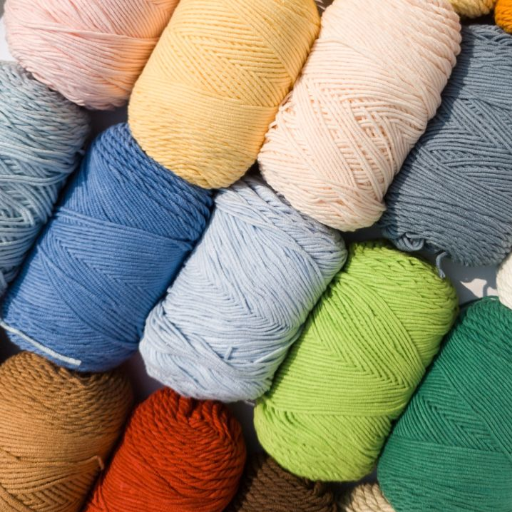
Cotton cashmere blend yarns are highly versatile and suitable for a wide array of projects. Because of its relatively light and warm properties, it is used to make lightweight sweaters, cardigans and shawls. Its softness also makes it a popular fabric for baby blankets and clothes. In the home, it serves well in the making of dishcloths, pillow covers and crocheted baskets. It is soft, durable and easy to care for. Its numerous vivid colors and distinctive imaginative patterns make it a favorite for many.
Creating Comfy Scarves with Cotton Blend Yarn
The cotton mix yarn has incredible unique qualities of comfort and strength and can be used for making scarves. Cotton fibers, as you know, makes a scarf more breathable for use in different climates. Additionally, the synthetic or wool parts of the scarf will make it warmer than usual, while giving it more elasticity. Many braided cotton blends are specifically designed to hold softness, scarf accessories do need to be gentle on the skin especially at the neck and face area.
Furthermore, new practices in yarn processing have increased available textures and weights, which allows crafters to pick options that are lightweight and airy like for spring, or dense and cozy for colder months, and deliciously thick for winter. Because of this, the vibrancy and long-lasting color that these dyes have makes it fade resistant, even after washing it multiple times. This makes cotton blend yarn helpful for both beginners and professional craftsmen to make reliable pieces.
Knitting Shawls with Cotton Acrylic Blend Yarn
Shawls can be knitted from cotton-acrylic blends because they are soft, durable, easy to take care of and maintenance. Breathability and a natural feel are provided with the cotton component, while acrylic aids in better resilience and elasticity, preventing stretching or misshaping over time. This blend adds warmth without bulk, making it suitable for shawls designed to be worn in layers during changeable weather. Moreover, finer yarn blends made with cotton-acrylic increase stitch definition whereby intricate lacework or cables can be knit to stand out sharply. The prevention of pilling also keeps the shawl looking fresh and extending its aesthetic appeal. In summary, the properties outlined here set back the blend’s ability to withstand wear far surpasses the shawl’s ability to retain its looks, making it an exceptional choice for products that strike a balance with sophisticated design alongside practical use.
Perfect Garments for Summer Using Cotton Yarn
Summer clothing benefits immensely from lightweight and breathable fabrics like cotton yarn, which is easy to wear during the warm season. Its natural fibers effectively wick away moisture, and help keep the body cool in the summer months. According to market data from this year’s summer season, cotton yarn blended with linen or bamboo not only improved the strength of the fabric, but it also added a faint luster to the finished product. Therefore, the recommendation is to use those blends for summer staples including but not limited to tank tops, sheer cardigans, and casual summer dresses. Besides that, cotton is hypoallergenic making it a suitable fabric for sensitive skin. Furthermore, new methods of cotton spinning have developed softer and more supple yarns, which makes spring and summer garments easier to move in and brings the ability to keep their shape long after they are worn.
How Does Cotton Acrylic Blend Yarn Compare to Other Yarn Types?
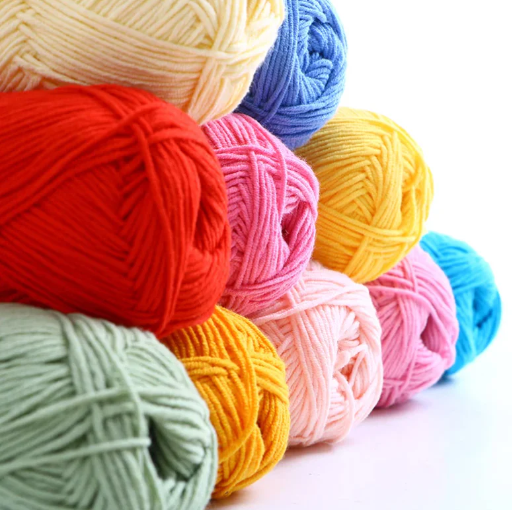
The cotton-acrylic blend yarn possesses distinctive characteristics when compared to other types of yarn. It is less durable and lighter than pure cotton yarn, but far more resilient and less prone to shrinkage, as well as better suited for cotton yarn projects designed for garments with long lasting wear. Unlike wool which is itchy to many people, the blend is much softer and non-allergenic, and thus easier to wear. it is also more convenient for daily practicality because it dries faster than a cotton yarn. Moreover, the blend is far more comfortable and versatile than synthetic yarns, such as polyester, because it combines the breathability of cotton, with the elasticity and strength of acrylic.
Cotton vs. Pure Cotton: Which is Better for Your Project?
|
Key Point |
Cotton |
Pure Cotton |
|---|---|---|
|
Fiber Composition |
Natural fibers |
100% natural cotton fibers |
|
Softness |
Soft and comfortable |
Very soft and natural feel |
|
Durability |
Moderate durability |
High durability |
|
Breathability |
Good ventilation |
Excellent breathability |
|
Moisture Absorption |
Moderate moisture absorption |
High moisture absorption |
|
Hypoallergenic Properties |
Hypoallergenic |
Highly hypoallergenic |
|
Shrinkage |
Slight shrinkage possible |
Higher shrinkage risk |
|
Cost |
Generally more affordable |
Often more expensive |
|
Easy Maintenance |
Easy to maintain and wash |
Requires gentler cleaning |
|
Suitable for Projects |
Everyday, versatile use |
Premium, high-quality projects |
Why Choose Mercerized Cotton for Your Next Crochet Project?
Mercerized cotton is best for those into crochet as it offers new and added features that enhance its functionality while maintaining its style. For crochet enthusiasts, the mercerization process adds to the cotton’s tensile strength making it more robust and less able to face damage in the long run. Also, mercerization yields a luxurious sheen on yarn, gaining the appeal of almost every crocheting or knitting lover, which beautifies every item from lacework to home decor.
This kind of cotton ensures vibrant colors are retained permanently when used for dyeing as compared to untreated cotton. Their enhanced longevity is especially beneficial when dealing with long-term colored projects such as fabrics. Their smooth texture, low shrinkage, and reduced moisture absorption which minimizes the chance of mold growth also leads to decreased drying time. These aspects not only aid in quicker drying time but also when combined with the smooth texture, reduces the risk of mold and enhances stitch precision. This is extremely useful when working on advanced detail crochet patterns.
The enhanced value of mercerized cotton, especially when labeled as ‘expensive’, is most appealing when constructing projects that need high-quality craftsmanship accompanied with rugged endurance, visual splendor, and refined outcomes. It is wonderful for creating decorative objects, clothes, and accessories. A polished and long-lasting look comes from using mercerized cotton and meets the level of finesse needed for a durable finish.
Reference Sources
-
A study of wicking properties of cotton-acrylic yarns: This paper investigates the wicking properties of cotton-acrylic rotor yarns and knitted fabrics, focusing on how yarn wicking affects fabric wicking in both wale and course directions.
-
Studies on cotton–acrylic bulked yarns and fabrics. Part I: This study examines the impact of variables like yarn fineness, shrinkable acrylic proportion, and twist level on the properties of cotton-acrylic blended bulked yarns.
-
A study of wicking properties of cotton-acrylic: Similar to the first study, this paper also explores the wicking properties of cotton-acrylic yarns and fabrics.
-
Studies on cotton-acrylic bulked yarns produced from different spinning technologies: This research discusses how bulking treatments affect the flexural rigidity, compressibility, and compressional recovery of cotton-acrylic yarns.
Frequently Asked Questions (FAQs)
Q: What are the benefits of using a blend of cotton and acrylic yarn?
A: A blend of cotton and acrylic yarn combines the softness and breathability of cotton with the durability and elasticity of acrylic. This makes it ideal for various projects, including garments and home decor, as it is comfortable to wear and easy to care for.
Q: Can I use cotton blend yarns from Lion Brand for crocheting and knitting?
A: Yes, cotton blend yarns from Lion Brand are perfect for both crocheting and knitting. They offer a variety of textures and colors, making them versatile for projects such as baby blankets, sweaters, and more.
Q: What type of projects are best suited for soft cotton yarn?
A: Soft cotton yarn is excellent for lightweight garments, summer accessories, and baby items. Its breathable nature makes it ideal for warm weather clothing, while its softness ensures comfort against the skin.
Q: Is pima cotton suitable for knitting and crocheting?
A: Yes, pima cotton is a luxurious choice for knitting and crocheting due to its long fibers, which provide a smooth finish. It is perfect for making items like summer tops, shawls, and home decor pieces.
Q: How does the yarn weight affect my knitting projects?
A: Yarn weight is crucial as it determines the thickness of the yarn and the resulting fabric density. For example, worsted weight yarn is versatile for a range of projects, while lighter weights may be better for delicate items like lacework or baby clothes.
Q: What is the difference between merino wool and cotton blend yarn?
A: Merino wool offers superior warmth and moisture-wicking properties, making it ideal for colder climates, while cotton blend yarn is lightweight and breathable, making it suitable for warmer weather projects.
Q: Are there any free patterns available for cotton blend yarn projects?
A: Yes, many brands like Lion Brand and Premier Yarns provide free patterns specifically designed for their cotton blend yarns, which can be found on their websites or through crafting communities.
Q: Can I use Bernat Softee Cotton for making a baby blanket?
A: Absolutely! Bernat Softee Cotton is soft and gentle against a baby’s skin, making it a great choice for creating cozy baby blankets.
Q: What is the advantage of using acrylic cotton blend yarn for warm-weather projects?
A: Acrylic cotton blend yarn is lightweight and breathable, which helps keep you comfortable during warm weather. Additionally, the acrylic content adds durability and reduces the risk of stretching or losing shape.
Q: What is the best way to care for cotton and acrylic blend yarn items?
A: Most cotton and acrylic blend yarn items can be machine washed on a gentle cycle and should be air-dried to maintain their shape and softness. Always check the care label for specific instructions.








